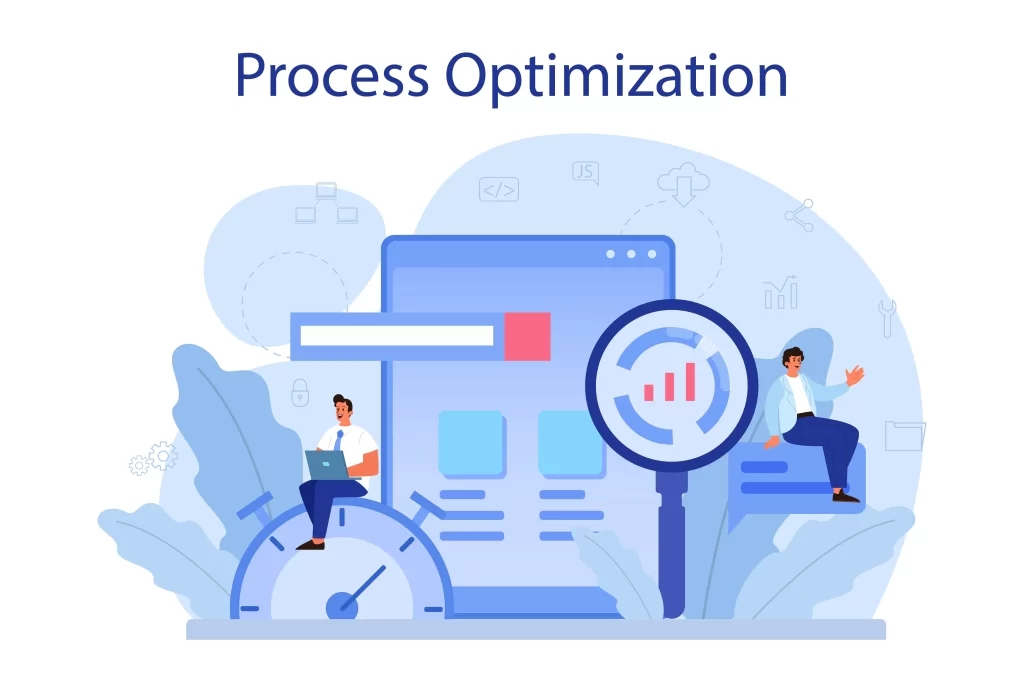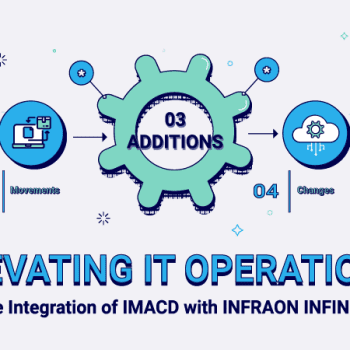The asset management industry is becoming increasingly important for companies to maximize their techniques to stay competitive. As asset management technology progresses, so do all the techniques and strategies used to maximize profits and optimize asset management.
This blog covers the top five asset management optimization techniques for 2025 and provides insights on implementing them for maximum performance.
Asset management involves overseeing an organization’s tangible assets—both tangible (like equipment) and intangible (like software)—to maximize their value. It involves tracking assets, managing their lifecycle from acquisition to disposal, monitoring performance, mitigating risks, and optimizing costs to ensure they contribute to organizational goals.
Related blog: Seamless IT Asset Onboarding is the Need of an Hour for Banks
What is Asset Optimization? What is the process of Asset Management Optimization?
Asset optimization is the strategic process of enhancing the performance and value of an organization’s assets by focusing on competence, cost-effectiveness, and longevity. The asset optimization model involves a series of targeted actions and advanced tools and technologies to ensure that assets are utilized to their fullest potential throughout their lifecycle.
Asset optimization involves several key steps that work together to enhance the performance and value of an organization’s assets. Here’s a breakdown of these steps:
1. Assessment and Analysis:
- Initial Evaluation: Conduct a comprehensive assessment of all assets to understand their current state, performance, and utilization.
- Data Collection: Gather data on asset performance, maintenance history, operational costs, and other relevant metrics.
- Gap Analysis: Identify gaps between current performance and optimal performance levels, highlighting areas for improvement.
2. Goal Setting and Strategy Development
- Define Objectives: Set clear goals for what the company wants to achieve through asset optimization, such as reducing costs, improving productivity, or extending asset life.
- Develop a Strategy: Create a detailed plan that outlines the steps needed to achieve these objectives, including timelines, resource allocation, and key performance indicators (KPIs).
3. Implementation of software asset management optimization model
- Predictive Maintenance: Implement predictive maintenance technologies to anticipate and address potential issues before they lead to asset failure.
- Automation Tools: Utilize automation and AI-driven tools to streamline asset management processes and reduce human error.
- Real-Time Monitoring: Set up real-time asset performance monitoring systems to quickly identify and respond to inefficiencies.
4. Performance Monitoring and Continuous Improvement
- Ongoing Monitoring: Continuously monitor asset performance against the defined KPIs to ensure that optimization efforts are on track.
- Feedback Loops: Establish feedback loops where data from monitoring efforts informs further optimization actions.
- Regular Updates: Periodically review and update the asset optimization strategy to reflect changing organizational needs and new technological advancements.
5. Cost-benefit analysis and Adjustments
- Evaluate ROI: Conduct a cost-benefit analysis to measure the return on investment from the optimization efforts.
- Adjust Strategy: Based on performance data and ROI findings, adjust the optimization strategy to ensure the process remains aligned with organizational goals.
By following these steps, organizations can optimize their assets, improving production, reducing costs, and enhancing asset longevity.
Optimization of Maintenance Planning and Control

Optimization of maintenance planning and control is a critical aspect of asset management that enhances maintenance activity performance and cost efficiency. It involves strategic planning and control techniques to ensure that maintenance tasks are performed at the right time, in the right way, and at optimal cost.
Here’s an overview of how to optimize maintenance planning and control:
- Implement Predictive Maintenance: Use data and analytics to predict when maintenance should be performed based on asset condition. Key actions include:
- Install Sensors: Equip assets with sensors to collect real-time performance data.
- Analyze Data: Use predictive analytics to identify patterns and forecast potential failures.
- Schedule Maintenance: Plan activities based on predicted needs rather than fixed intervals.
Implementing predictive maintenance reduces unplanned downtime, minimizes costs by addressing issues early, and extends asset life through timely interventions.
- Adopt Condition-Based Maintenance: Perform maintenance based on the actual condition of the asset rather than a predetermined schedule. It includes:
- Monitor Asset Condition: Monitor temperature, vibration, and wear metrics.
- Trigger Maintenance: Initiate maintenance activities when condition indicators reach predefined thresholds.
Optimized maintenance reduces unnecessary tasks, ensures maintenance is performed when needed and improves asset reliability and performance.
- Utilize Computerized Maintenance Management Systems (CMMS): Implement CMMS to streamline and automate maintenance planning and control. Key action includes:
- Track Work Orders: Use CMMS to create, assign, and track work orders.
- Manage Inventory: Monitor spare parts and inventory levels to avoid shortages.
- Schedule Maintenance: Automate scheduling of preventive and corrective maintenance tasks.
Utilizing a CMMS can improve maintenance activities, give organizations visibility into maintenance performance and costs, and enhance communication and coordination among maintenance teams.
- Optimize Maintenance Scheduling: Develop and manage maintenance schedules to balance asset availability and maintenance needs. It covers:
- Prioritize Tasks: Categorize maintenance tasks based on criticality and impact on operations.
- Create Schedules: Develop maintenance schedules that minimize disruption and align with production cycles.
- Adjust as Needed: Review and adjust schedules based on asset performance and operational demands.
Maintenance scheduling helps minimize operational downtime and disruption. It ensures the timely completion of maintenance tasks and balances maintenance activities with production requirements.
- Conduct Regular Maintenance Reviews and Audits: Periodically review and audit maintenance processes to identify areas for improvement. It includes:
- Review Performance Metrics: Analyze key performance indicators (KPIs) such as the mean time between failures (MTBF) and mean time to repair (MTTR).
- Audit Processes: Conduct audits to assess the usefulness of maintenance procedures and adherence to best practices.
- Implement Improvements: Use audit findings to refine and enhance maintenance strategies and processes.
Regular maintenance reviews and audits help identify and address the issues in maintenance activities, enhance maintenance activities and reliability, and support continuous maintenance planning and control improvement.
- Integrate with Asset Management Strategies: Align maintenance planning and control with broader asset management strategies. It includes:
- Coordinate with Asset Lifecycle Management: Ensure maintenance activities support the overall asset lifecycle and performance objectives.
- Align with Strategic Goals: Integrate maintenance planning with organizational goals and operational strategies.
Integrate with asset management strategies to ensure alignment with broader asset management goals, enhancing overall asset performance and value. This approach supports the alignment between maintenance activities and business objectives, ensuring that maintenance efforts contribute to the organization’s strategic aims.
Optimizing maintenance planning and control involves leveraging techniques such as predictive maintenance, condition-based maintenance, CMMS, scheduling optimization, regular reviews, and integration with asset management strategies. By implementing these practices, organizations can improve performance, reduce costs, minimize downtime, and enhance their assets’ overall performance and reliability.
Top 5 Asset Management Optimization Techniques
Asset management optimization techniques are essential for businesses to enhance their asset management practices, maximizing value while minimizing costs and risks. Here are the top 5 techniques to optimize asset management:
- Implementing Asset Tracking Software: Asset tracking software is a critical tool for modern asset management, offering real-time visibility into the location, condition, and maintenance history of assets. This technology enables organizations to monitor asset usage continuously, identify underutilized assets, and prevent loss or theft. By providing detailed insights into asset performance, tracking software helps ensure that assets are used optimally, reducing the likelihood of operational disruptions and enhancing overall asset management.
- Conducting Regular Asset Audits: Regular asset audits are essential for maintaining an accurate and up-to-date record of all assets. These audits help businesses identify what assets they own, their locations, and their current condition. This process is crucial for spotting underutilized or no longer-needed assets, allowing organizations to optimize their asset base. By understanding asset utilization and condition, businesses can make informed decisions, streamline operations, and reduce unnecessary costs associated with asset management.
- Implementing Predictive Maintenance: Predictive maintenance uses advanced data analytics and machine learning algorithms to forecast when an asset is likely to fail. This proactive approach allows organizations to schedule maintenance activities in advance rather than waiting for equipment to fail unexpectedly. By addressing potential issues before they result in downtime, predictive maintenance helps increase asset availability, reduce repair costs, and extend the lifespan of critical equipment, ultimately improving overall operational performance.
- Adopting a Holistic Asset Management Approach: Adopting a holistic asset management approach means considering all aspects of asset management description throughout the asset lifecycle, including procurement, usage, maintenance, and disposal. This comprehensive strategy ensures that every stage of asset management is optimized, leading to better resource allocation and cost savings. By integrating all these elements into a cohesive management plan, businesses can achieve a more streamlined and effective asset management process, reducing waste and improving asset performance.
- Using Data Analytics and AI: Data analytics and AI are transformative technologies in asset management, offering powerful tools for analyzing asset usage patterns and predicting potential failures. By leveraging these technologies, businesses can gain insights into how assets are utilized and identify trends that may indicate underutilization or impending issues. AI-powered predictive models help forecast failures before they occur, enabling proactive maintenance and reducing downtime and maintenance costs. These technologies enhance decision-making and optimize asset management practices, increasing performance.
By implementing these top 5 asset management optimization techniques, businesses can significantly enhance their asset management strategies, increase productivity, and reduce costs.
How Asset Management Optimization Creates Business Value?
Asset management optimization is a powerful strategy that enhances business value by reducing costs and boosting overall performance. Here’s how it creates substantial business value:
- Improved Asset Utilization: Asset management optimization ensures that assets are utilized to their maximum potential, reducing idle time and minimizing underutilization. By proactively managing asset allocation and usage, businesses can enhance the productivity of each asset, thereby decreasing the need for additional assets and lowering procurement costs. This increased performance leads to a higher return on investment, as existing assets are leveraged more optimally, maximizing their value.
- Reduced Operational Costs: Optimizing asset management is crucial in lowering various operational costs associated with asset maintenance and procurement. Predictive and condition-based maintenance helps prevent costly repairs and unexpected downtimes, while active inventory management minimizes carrying costs and stockouts. Streamlining these processes cuts wasteful expenditures and enhances budget management, increasing profitability.
- Enhanced Asset Longevity: Proactive asset management extends the lifespan of assets through proactive maintenance and strategic lifecycle management. By implementing regular maintenance schedules and timely repairs, businesses can prevent premature asset failure and maximize their assets’ useful life. Continuous condition monitoring allows for early issue detection, further prolonging asset durability and reliability and reducing the frequency of asset replacements.
- Increased performance: Streamlined asset management processes lead to higher operational performance by minimizing downtime and boosting productivity. Predictive maintenance and optimized scheduling reduce unplanned interruptions, while improved coordination enhances workflow operations. It results in greater throughput, better service delivery, and enhanced agility within the organization, all contributing to overall operational excellence.
- Better Decision-Making: Data-driven asset management provides valuable insights that support informed decision-making and strategic planning. Businesses can identify trends and make strategic investments by analyzing comprehensive asset performance and usage data. These data-driven insights improve decision-making accuracy and align asset management strategies with broader business objectives, aiding in future planning and optimization.
- Compliance and Risk Management: Optimized asset management helps ensure compliance with industry regulations and mitigates risks associated with asset management practices. Adhering to regulatory standards and identifying potential risks related to asset management contributes to safer and more reliable operations. This proactive approach to compliance and risk management enhances the organization’s reputation and trust, reducing the risk of violations and improving overall safety.
By focusing on these critical areas, businesses can leverage asset management optimization to drive significant cost savings and overall value, ultimately enhancing profitability and maintaining a competitive market.
Related blog: Hardware asset management: The power of MSPs and IT managers
Conclusion:
Asset management optimization is critical to boost efficiency and profitability. In 2025 and beyond, top techniques like asset lifecycle management, predictive analytics, data visualization, automation, and mobile asset management will be crucial. These methods enhance asset utilization, decision-making, cost savings, and customer satisfaction. Staying current with trends and technologies is essential for maintaining a competitive edge and driving business success.
Leveraging Lightweight Tools for Better Asset Access
While enterprise-grade tools dominate most asset management strategies, lightweight applications can play a supporting role in optimizing access and control. One such example is the wave browser—a free, compact browser designed for quick and efficient web access.
Although not a replacement for enterprise platforms, using a streamlined browser like Wave Browser can help IT teams quickly navigate admin portals, cloud-based inventories, or even perform rapid diagnostics without overloading system resources. Its speed and simplicity make it a handy utility in environments where performance and minimalism matter.



















